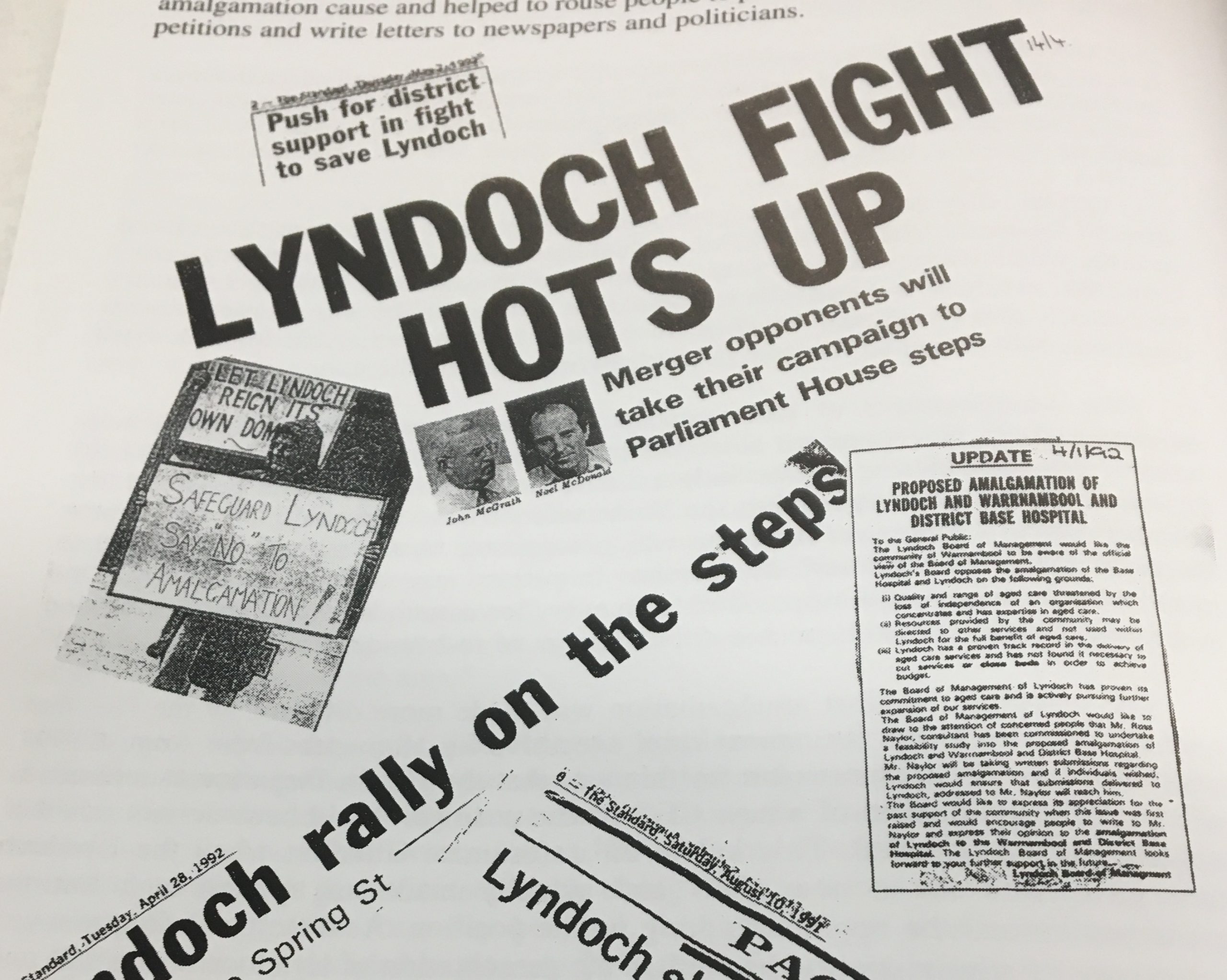
Carol Altmann – The Terrier
Tonight I want to answer a question that just keeps coming up: who owns Lyndoch Living?
The answer is the Warrnambool community.
In fact Lyndoch has been owned by the people of Warrnambool since day one, right back to the time when the “Lyndoch” property was secured by Ern Harris in 1952 and a public fundraiser was held to raise £13,000 toward the £40,000 price tag.
All of the land on which “Lyndoch” sits is also owned by Lyndoch Living, so the community owns that too.
This includes a slice of Scoborio Reserve that was portioned off by the Warrnambool City Council more than 20 years ago so Lyndoch could build the Tomlinson Centre for residents with dementia.
It’s the Tomlinson Centre that was recently bulldozed to make way for a planned $24 million medical clinic that is now at the centre of concerns that it could send Lyndoch broke.
In many ways, the Tomlinson Centre was what Lyndoch used to be all about.
The original building was funded through a generous donation from the Tomlinson family, and later extensions were paid for with the help of the A.L Lane Foundation, the Ray and Joyce Ubergang Foundation, the Ern Hartley Foundation and the Warrnambool Rotary Club.
That’s how Lyndoch used to work.
It used to work hand in glove with the community to raise funds to get things done, through raffles, Christmas parties and by simply asking for the public’s help.
In return, the community showed absolute loyalty to Lyndoch, especially when it was under threat of being merged or privatised, as it was in the 1990s.
The State and Federal governments fund various aspects of Lyndoch, but it is not government owned.
Nor is it privately owned.
Instead, Lyndoch sits in sweet spot of being community owned, but publicly funded.
This unique structure was tested in 1992, when the Labor Government tried to merge Lyndoch with the Warrnambool Base Hospital.
No bloody way, said the locals.
A strong, united, grassroots campaign led by then Lyndoch board members Drs Mike Page and Noel Bayley created multiple headlines and saw the idea wither.
As Peter Yule writes in his 2003 history of Lyndoch, the battle “brought home the value of Lyndoch as a unique community asset”.
This community ownership was tested again in the 1990s, when the Kennett Government planned to privatise all public aged care homes.
Lyndoch sought a legal opinion which confirmed, as Peter Yule writes, its unique legal status as “a community owned facility that provides public services”.
So let’s be clear – the community of Warrnambool owns Lyndoch.
It always has.
But so what?
As it stands, the community is shut off from any meaningful connection with Lyndoch and its decision makers.
We have lost that thread of accountability and mutual loyalty.
The board, which is now hand-picked by insiders, no longer answers questions issued by the media or individuals because, I guess, they dismiss all concerns as a beat-up.
In this new era, a former Acting Chief Financial Officer can raise the alarm over the viability of the $24 million medical clinic and it is met with silence.
This is incredible and, apparently, the new normal.
Gone are the days when we had a Dr Page or a Dr Bayley at the table, speaking up for the community and settling any concerns with straight forward answers.
Gone are the days of CEO Rhys Boyle, who lived in Warrnambool and became a recognisable part of its fabric.
Gone are the days of Lyndoch living within its means because now it doesn’t turn to the community, but to the banks.
Change happens – of course – but one of my biggest concerns when I first started to write about the changing face of Lyndoch Living 18 months ago was that the community would lose control of this valuable community asset.
It appears it already has.

